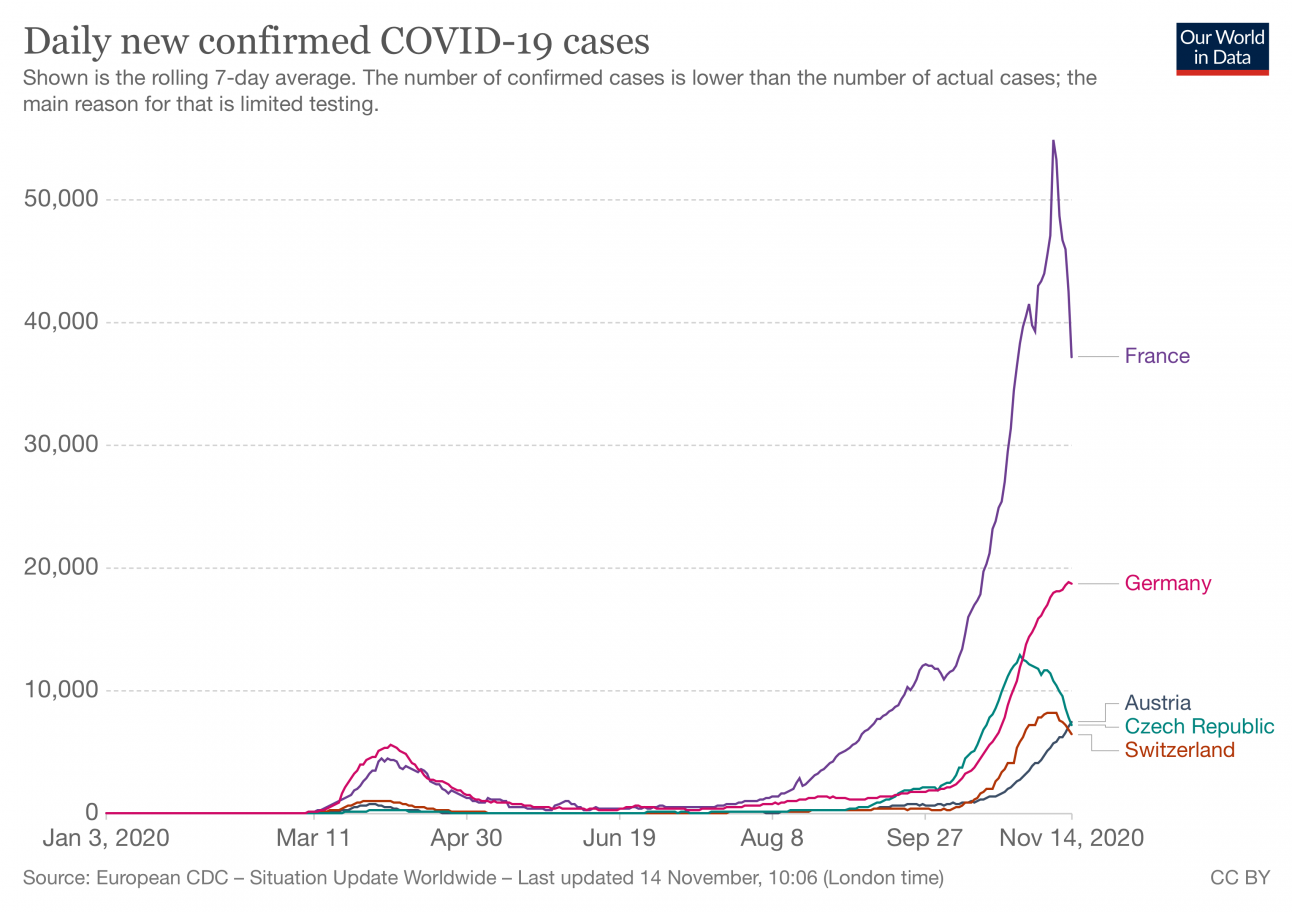Amid record case numbers, Austria has announced a range of ‘hard lockdown’ measures which will apply from Tuesday.
The Austrian government has come to the conclusion that the coronavirus shutdown – put in place on November 3rd – has been ineffective in stopping the spread of the virus.
In order to curb further infections – along with spiralling hospitalisations and death rates – Austria will adopt strict new lockdown measures from Tuesday, November 17th.
The measures will apply until at least December 6th.
When making the announcement, Austria’s Chancellor Sebastian Kurz told the media that the ‘hard lockdown’ was necessary as “every social contact is one too many”.
“My pressing demand for the coming weeks is as follows: Don't meet anyone. Every social contact is one too many,” said Kurz, stressing the need for “radical” action.
“There are still many who say that infections don't happen at school, in shops or services. But the truth is the authorities can no longer trace 77 percent of new infections, which means they no longer know where contamination is happening.”
Here’s an overview of what will change.
Daytime curfew
The new measures include a daytime curfew in addition to the nighttime curfew which is already in place.
Everyone will be required to stay home for 24 hours a day, other than for a limited number of exceptions.
Leaving the house to go shopping or visit the pharmacy – along with attending doctors appointments and church – will be permitted under the new measures.
People will be allowed to leave the house “for mental and physical relaxation”. This exception was already in place during the nighttime curfew and was taken to mean exercise and walking the dog.
Travelling to work and to education/school will be permitted “if they are necessary”.
Contact restrictions
Other than people in the same household, contact is restricted to partners, relatives and caregivers.

Many shops and services to close
Hairdressers, beauticians and massage services are no longer allowed.
All leisure facilities and betting shops must also close along with all stores that sell non-essential items such as clothes.
Fuel stations, tobacco shops, banks, kiosks, supermarkets, pharmacies and bicycle shops may still open.
Working from home
Anyone who can work from home is required to do so.
If working from home is not possible, a distance of one metre must at all times be maintained.
Mouth and nose coverings must be worn if distance cannot be maintained.
Retirement homes and hospitals
Only one visitor is allowed per week to nursing homes and hospitals – and the visitor must bring evidence of a negative PCR coronavirus test in order to enter.
Hospital visits will not be allowed at all if the person is admitted for less than seven days.
Masks must be worn during visits.
Employees must be tested once a week.
Pregnant women are an exception, as they can be accompanied by one person during a birth or an examination.
Children are allowed two visitors.
Schools
According to the Department of Education, all schools are expected to switch to distance learning.
This will come into effect from the 17th of November until the 4th of December.
Kindergartens and compulsory schools will no longer offer lessons, but will offer “care” to children who need it.
The 'most new cases in the world'
The country has seen 831 confirmed cases per million inhabitants over the past seven days, according to the “Our World in Data” website, as Austrian jumped ahead of neighbouring Czech Republic and Switzerland to top the global charts.
The nation of 8.8 million escaped relatively lightly during the first wave but Friday saw 10,000 infections in 24 hours and a further 7,000 on Saturday.
Daily cases had been running in contrast at only around 1,000 in early October. The recent rise has put pressure on hospitals with Covid-19 patients currently occupying 567 of 2,000 intensive care beds. The country's pandemic death toll currently stands at around 1,700.
——
Useful Links
Here's the Austrian government website that details all the measures in German.



 Please whitelist us to continue reading.
Please whitelist us to continue reading.
Member comments